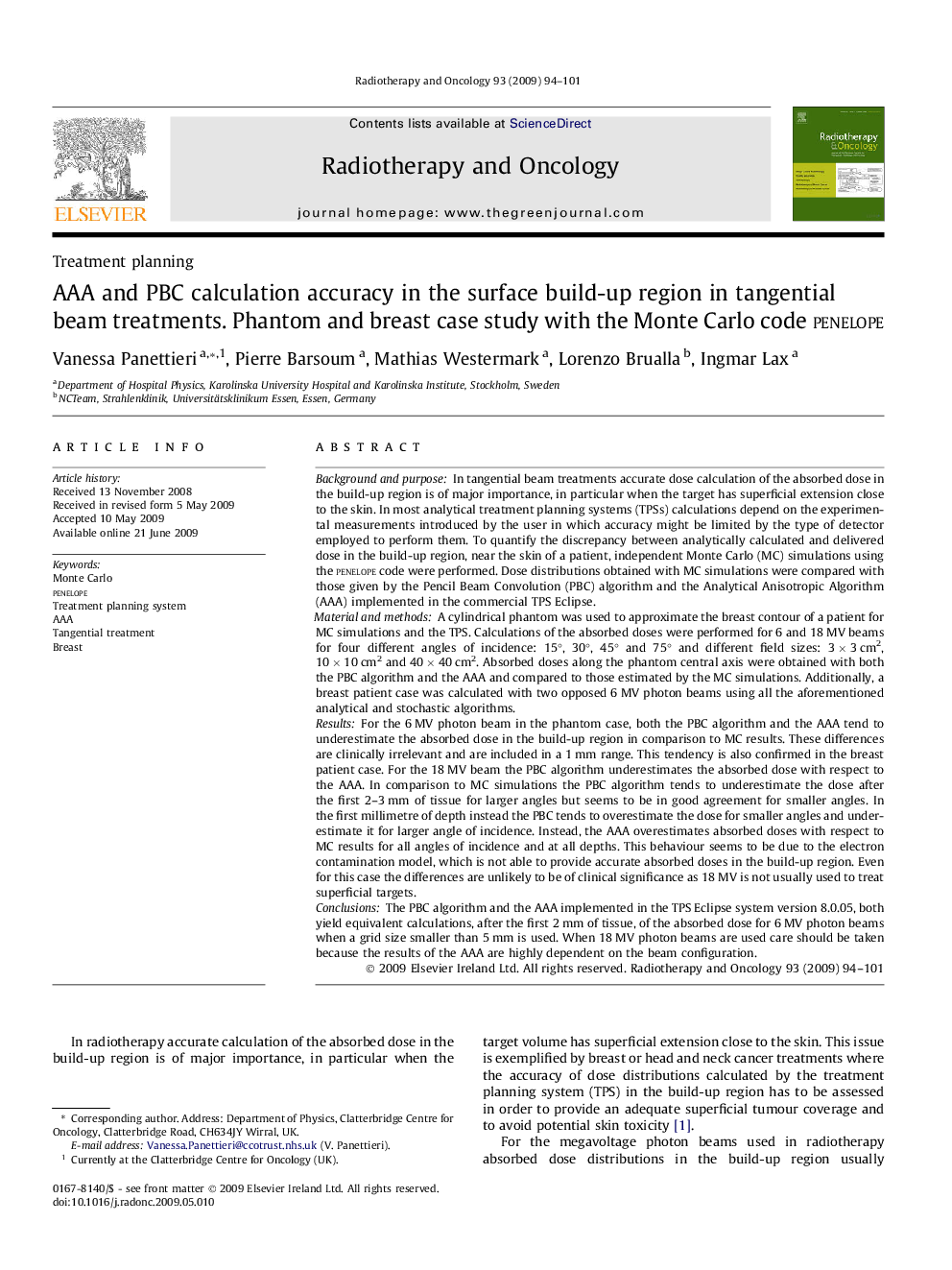| کد مقاله | کد نشریه | سال انتشار | مقاله انگلیسی | نسخه تمام متن |
|---|---|---|---|---|
| 2159699 | 1090864 | 2009 | 8 صفحه PDF | دانلود رایگان |

Background and purposeIn tangential beam treatments accurate dose calculation of the absorbed dose in the build-up region is of major importance, in particular when the target has superficial extension close to the skin. In most analytical treatment planning systems (TPSs) calculations depend on the experimental measurements introduced by the user in which accuracy might be limited by the type of detector employed to perform them. To quantify the discrepancy between analytically calculated and delivered dose in the build-up region, near the skin of a patient, independent Monte Carlo (MC) simulations using the penelope code were performed. Dose distributions obtained with MC simulations were compared with those given by the Pencil Beam Convolution (PBC) algorithm and the Analytical Anisotropic Algorithm (AAA) implemented in the commercial TPS Eclipse.Material and methodsA cylindrical phantom was used to approximate the breast contour of a patient for MC simulations and the TPS. Calculations of the absorbed doses were performed for 6 and 18 MV beams for four different angles of incidence: 15°, 30°, 45° and 75° and different field sizes: 3 × 3 cm2, 10 × 10 cm2 and 40 × 40 cm2. Absorbed doses along the phantom central axis were obtained with both the PBC algorithm and the AAA and compared to those estimated by the MC simulations. Additionally, a breast patient case was calculated with two opposed 6 MV photon beams using all the aforementioned analytical and stochastic algorithms.ResultsFor the 6 MV photon beam in the phantom case, both the PBC algorithm and the AAA tend to underestimate the absorbed dose in the build-up region in comparison to MC results. These differences are clinically irrelevant and are included in a 1 mm range. This tendency is also confirmed in the breast patient case. For the 18 MV beam the PBC algorithm underestimates the absorbed dose with respect to the AAA. In comparison to MC simulations the PBC algorithm tends to underestimate the dose after the first 2–3 mm of tissue for larger angles but seems to be in good agreement for smaller angles. In the first millimetre of depth instead the PBC tends to overestimate the dose for smaller angles and underestimate it for larger angle of incidence. Instead, the AAA overestimates absorbed doses with respect to MC results for all angles of incidence and at all depths. This behaviour seems to be due to the electron contamination model, which is not able to provide accurate absorbed doses in the build-up region. Even for this case the differences are unlikely to be of clinical significance as 18 MV is not usually used to treat superficial targets.ConclusionsThe PBC algorithm and the AAA implemented in the TPS Eclipse system version 8.0.05, both yield equivalent calculations, after the first 2 mm of tissue, of the absorbed dose for 6 MV photon beams when a grid size smaller than 5 mm is used. When 18 MV photon beams are used care should be taken because the results of the AAA are highly dependent on the beam configuration.
Journal: Radiotherapy and Oncology - Volume 93, Issue 1, October 2009, Pages 94–101